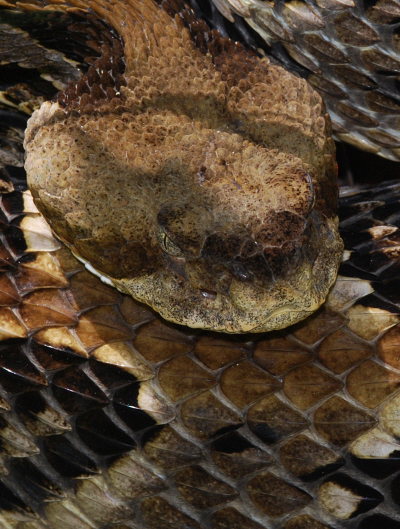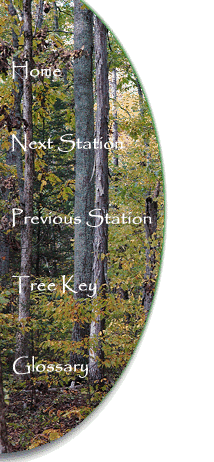| |
|
| |
 |
| |
Persimmon Leaves Front and Back |
Identification:
The leaves are simple,
alternate,
entire, glossy above and paler beneath. Each leaf
is between 4 inches and 6 inches long. Note the
alternate branching on this tree.
| |
|
 |
|
|
Persimmon Bark |
The bark of the Persimmon is one of
its best identifying characteristics. The bark is dark gray to
black, up to 1 inch thick, and develops into thick square blocks
divided by deep dark orange fissures.
The twigs of the Persimmon are
slender and gray to reddish brown in color. The lenticels are
orange.
Other Uses
and Lore:
A variety of
wildlife feast on the fruit. Birds, including the northern
bobwhite, are known to eat it, and it is relished by flying
squirrels, foxes and white-tailed deer. Most famously, it is
enjoyed by the opossum. When John James Audubon painted his
portrait of the opossum, he chose to show it high in a persimmon
tree.
The Trail From
Station Three to Station Four
 |
| Timber
Rattlesnake |
It is not far
from Station Three to Station Four. Summer is a good time for
reptiles, and you may see an Eastern Fence Lizard along the edges of
the trail. There are also venomous snakes like the Timber
Rattlesnake here, but you chances of encountering one are small.
This is another good reason to stay on the trail. Although
these animals instill fear in many people and should be avoided,
remember that they are an important part of the ecosystem and are a
protected species in Tennessee.
|

